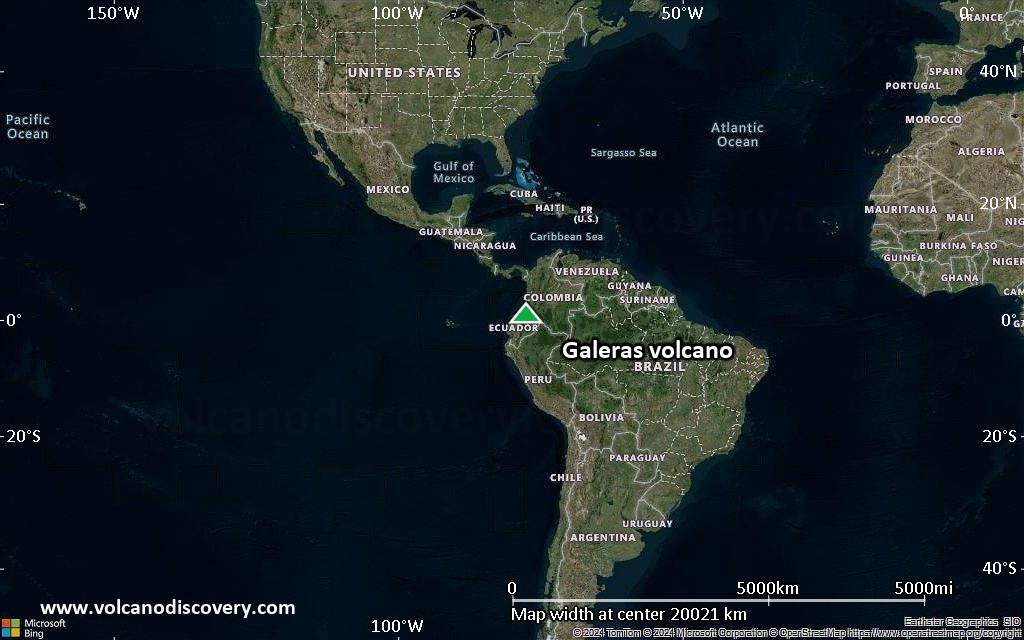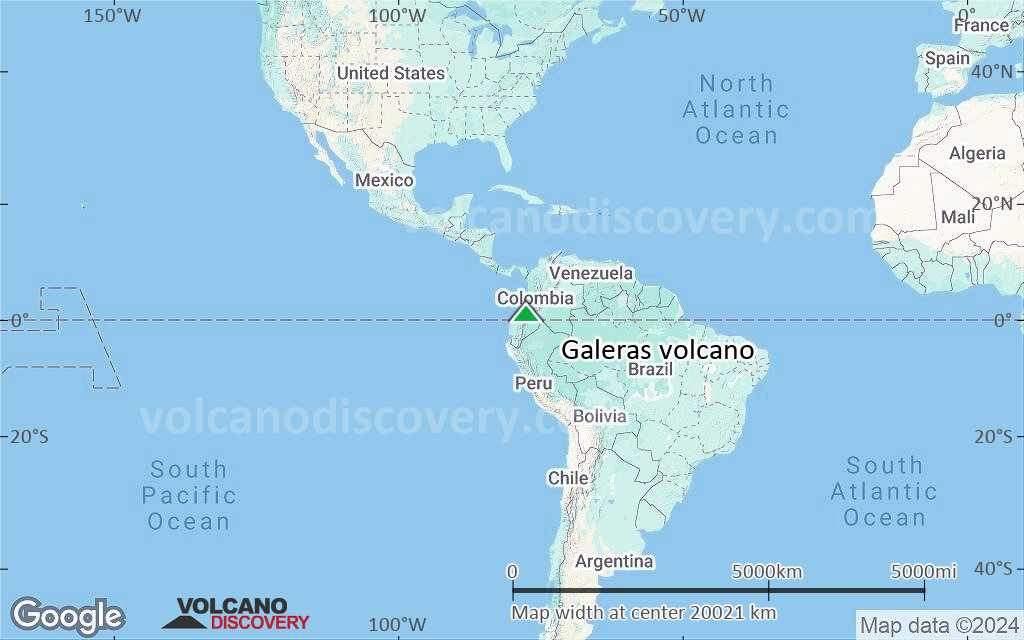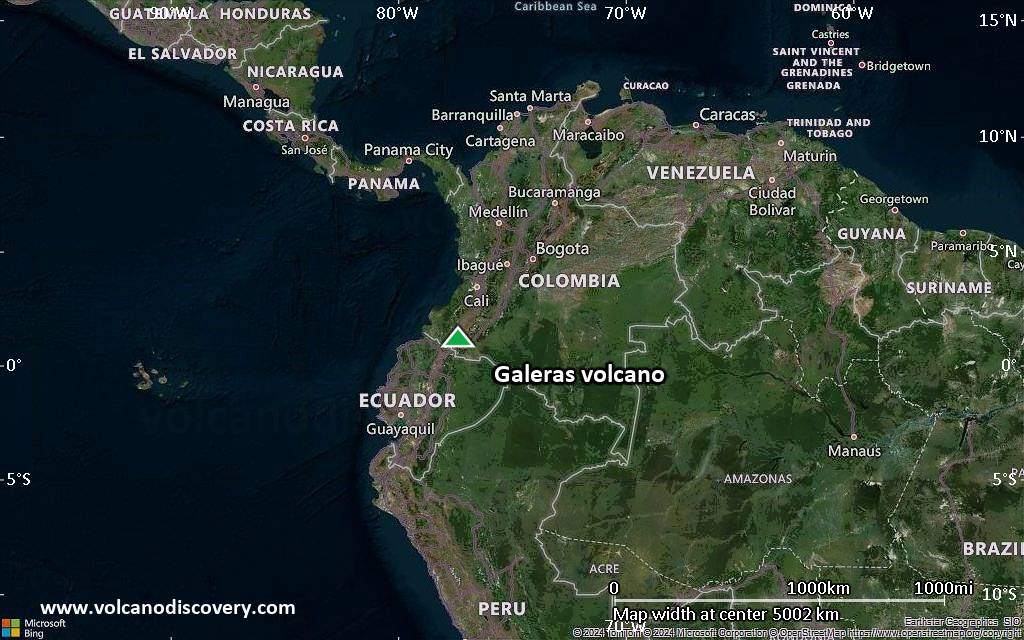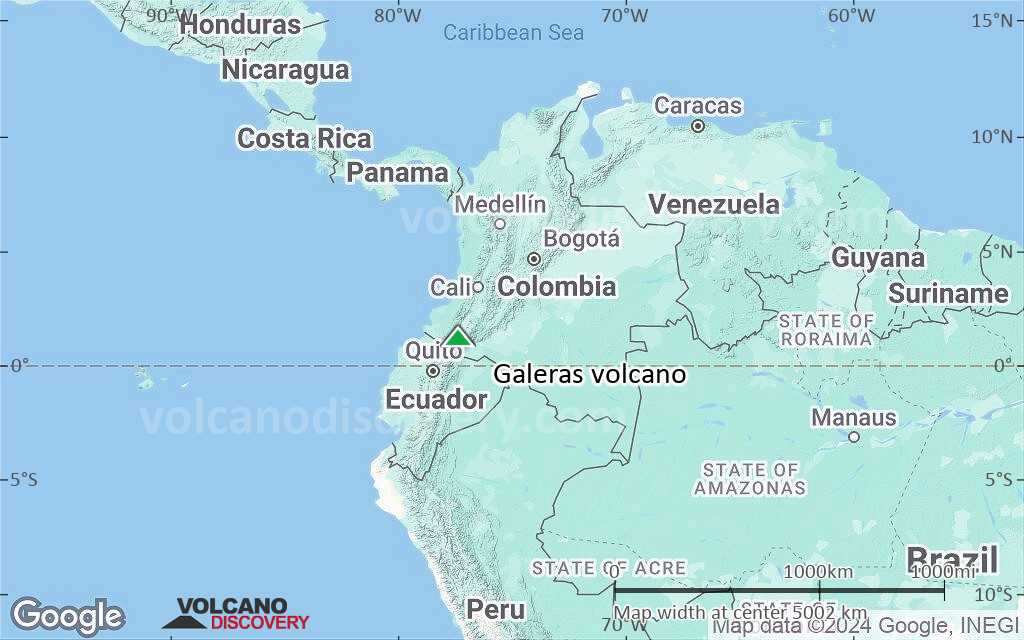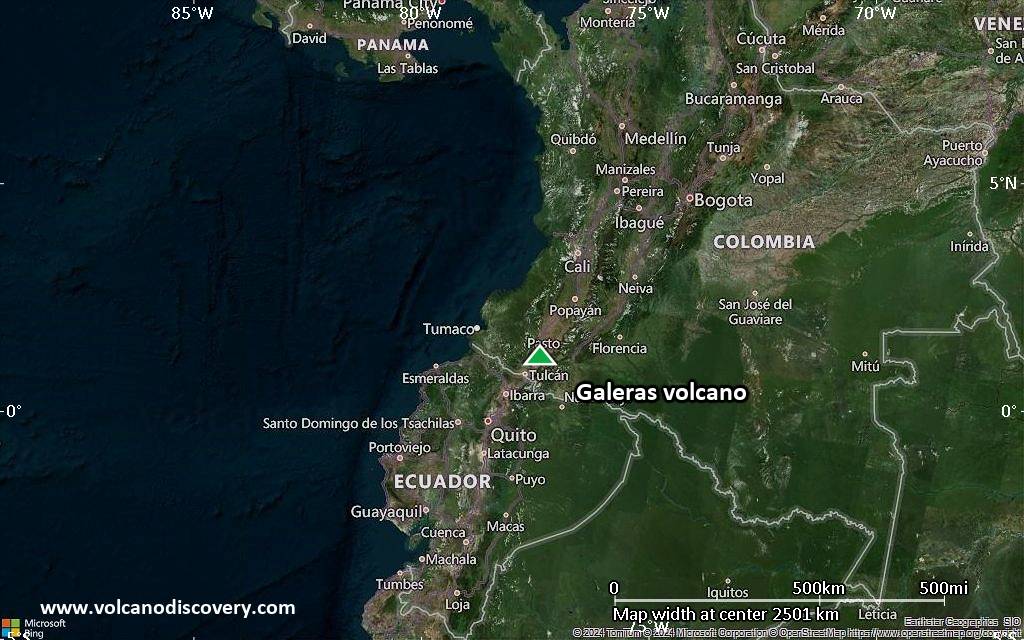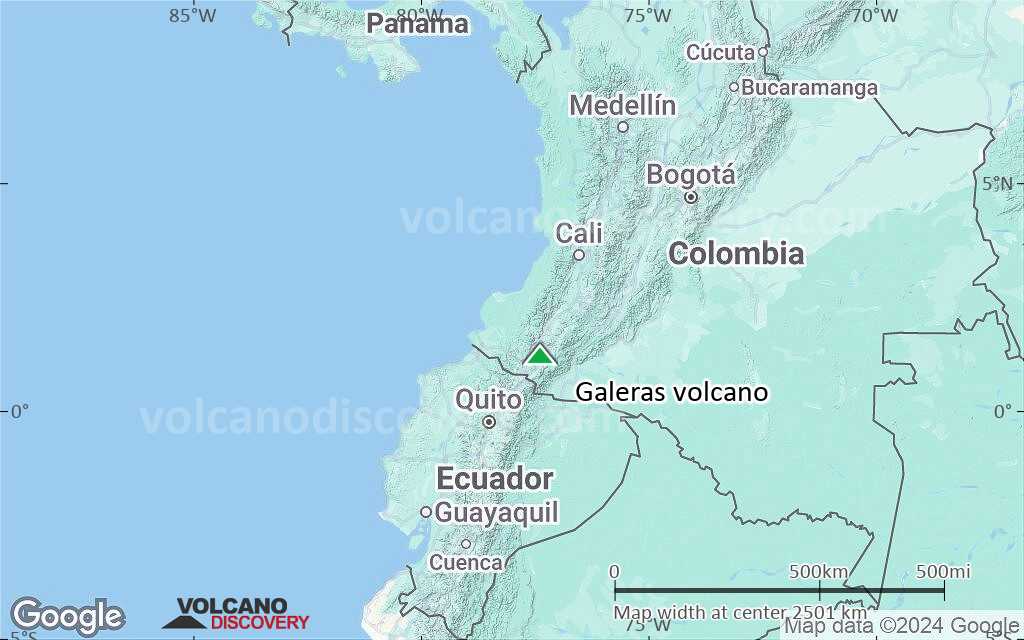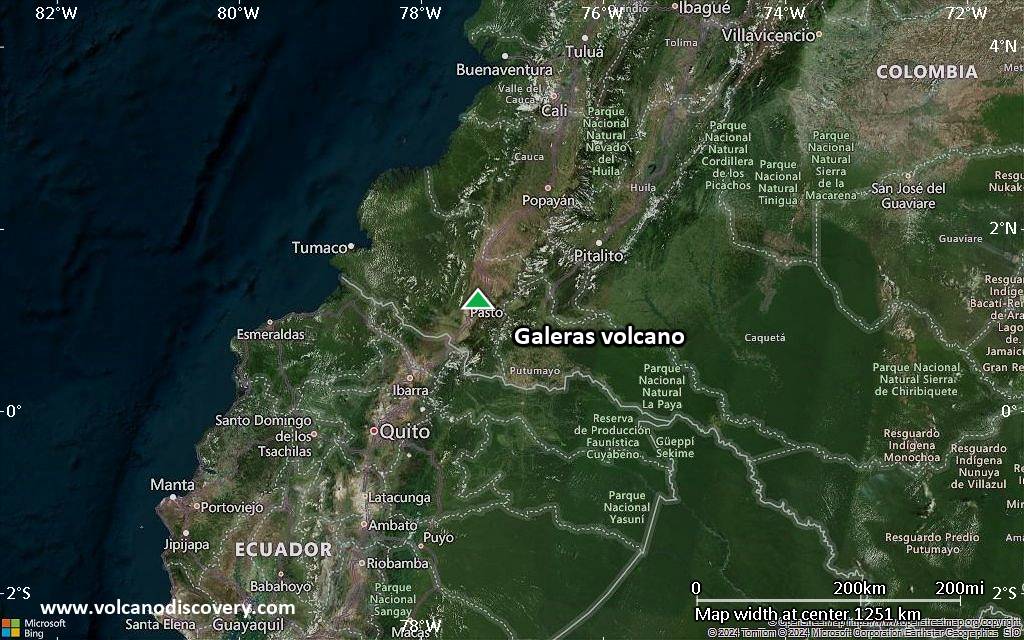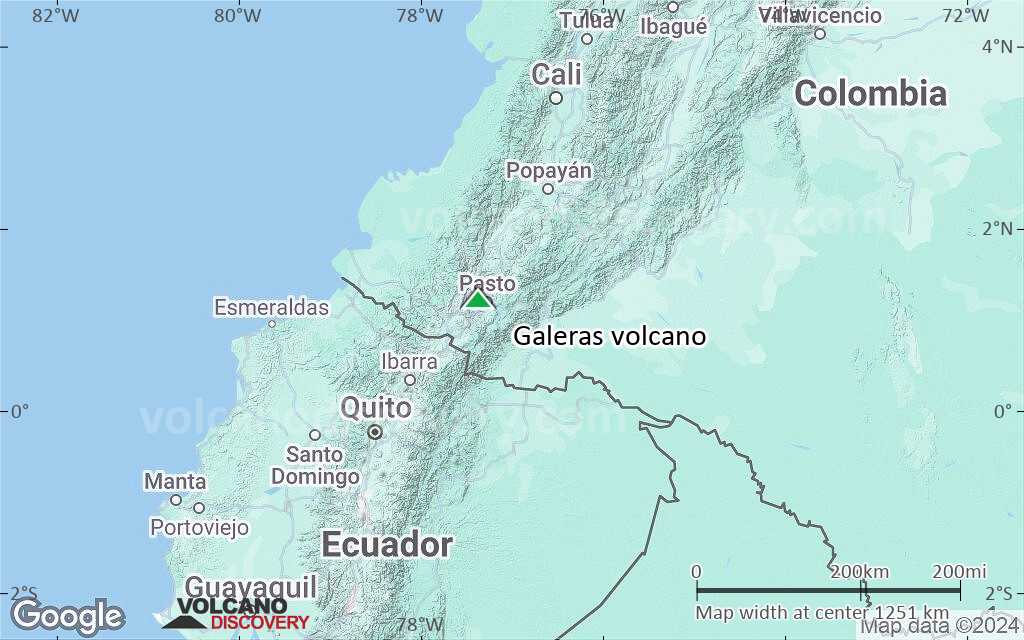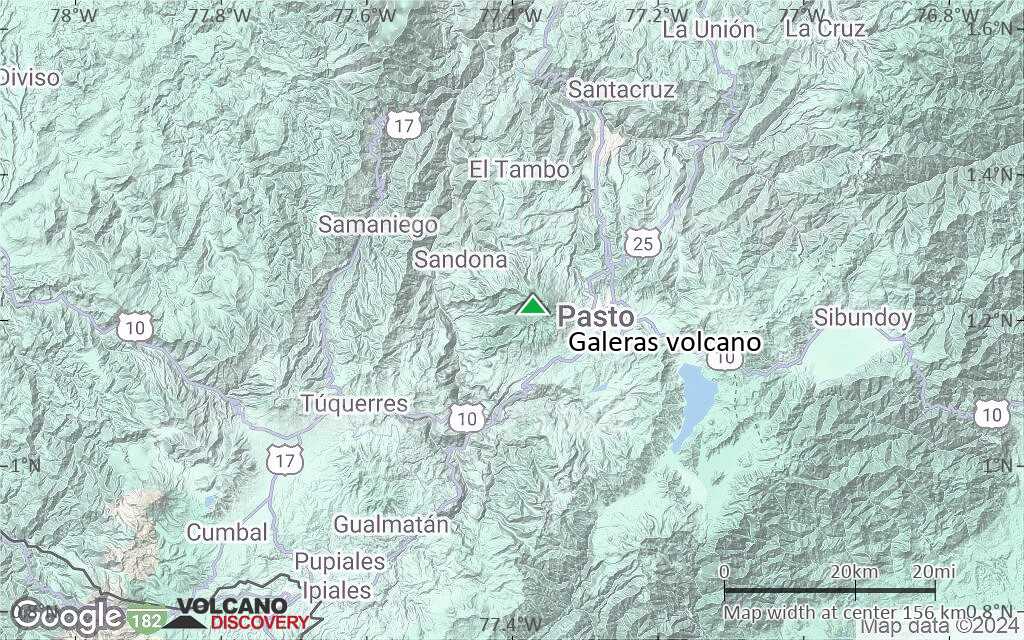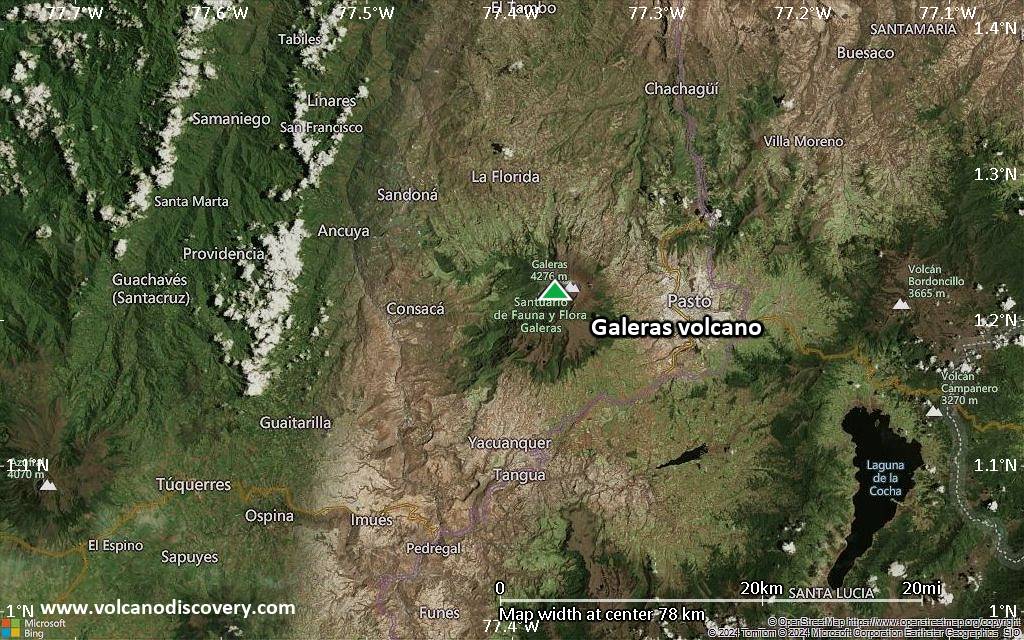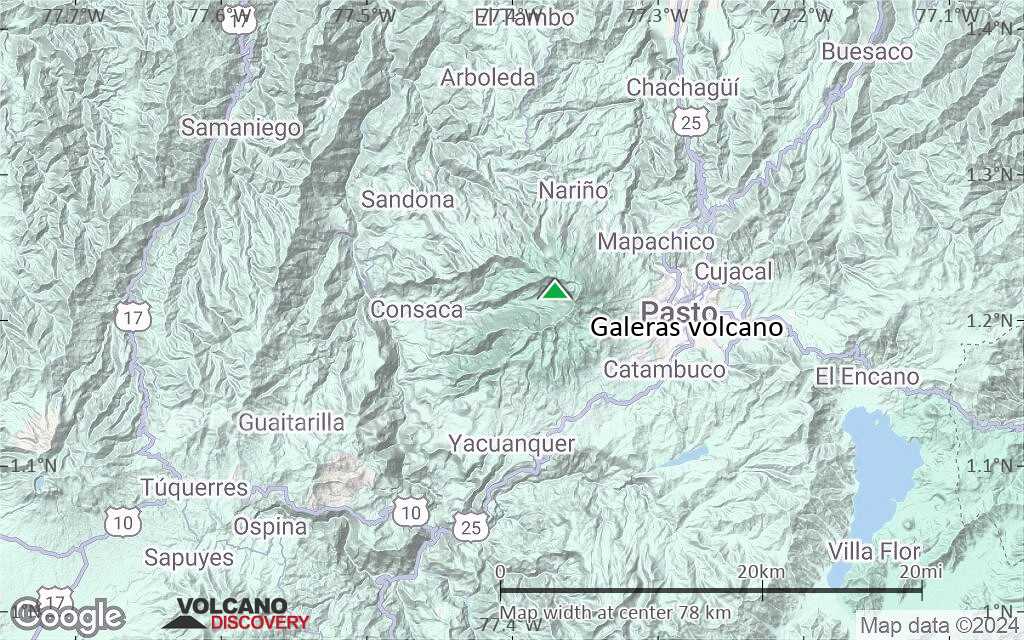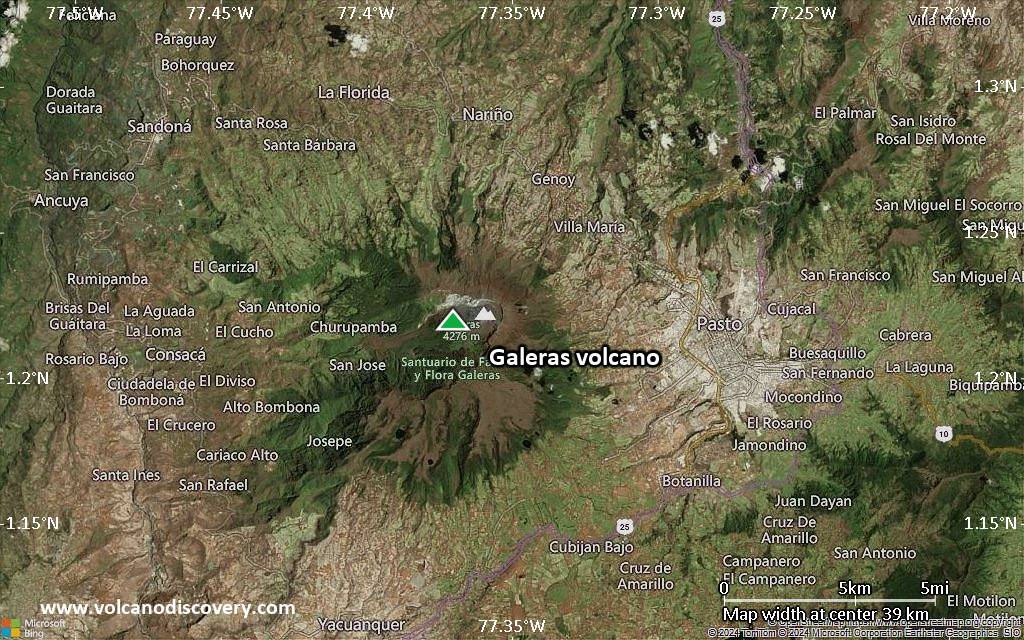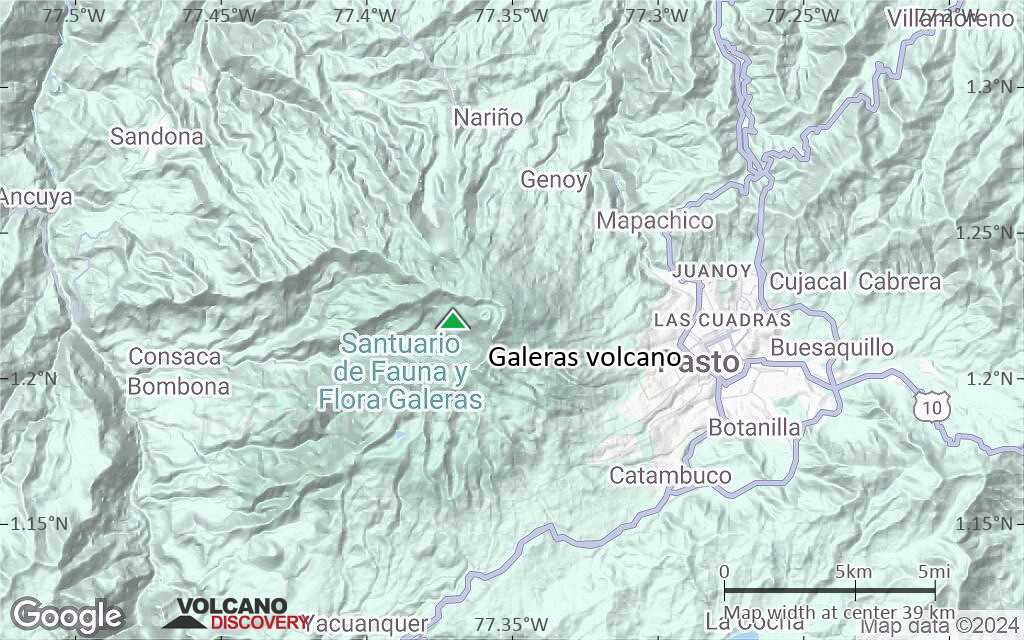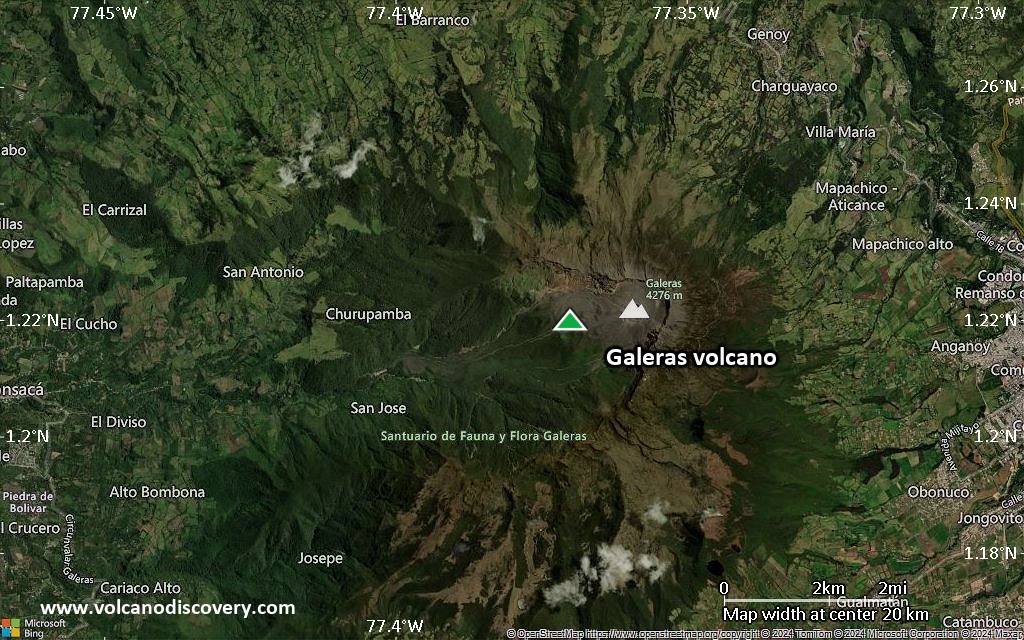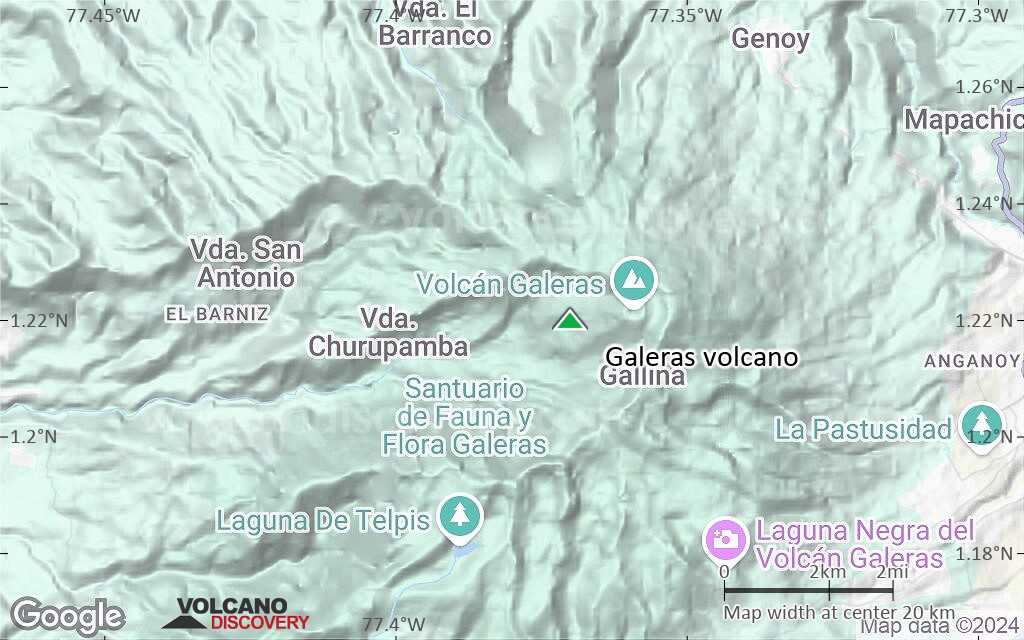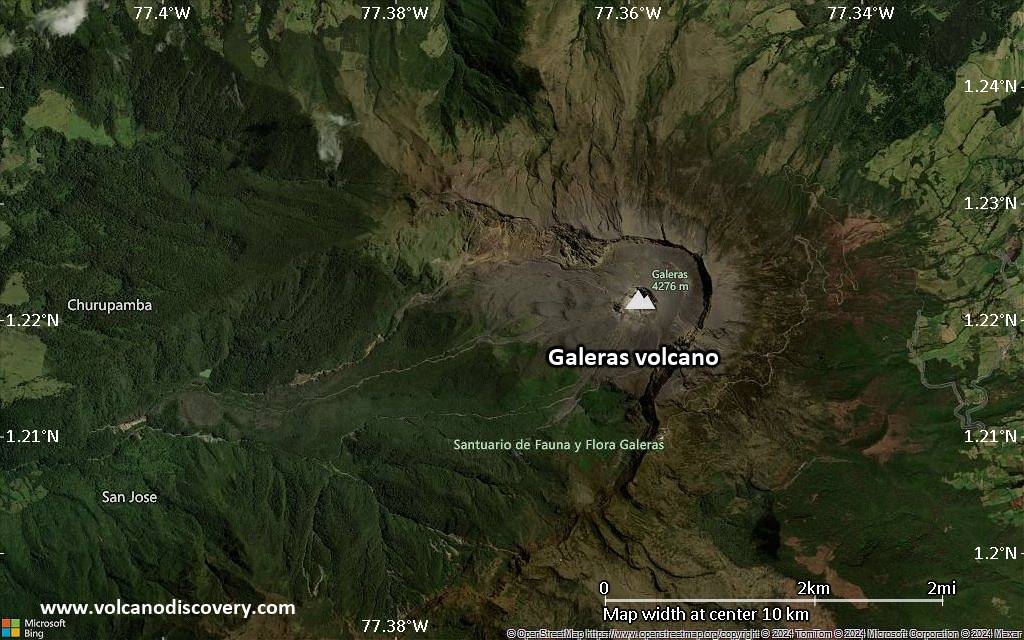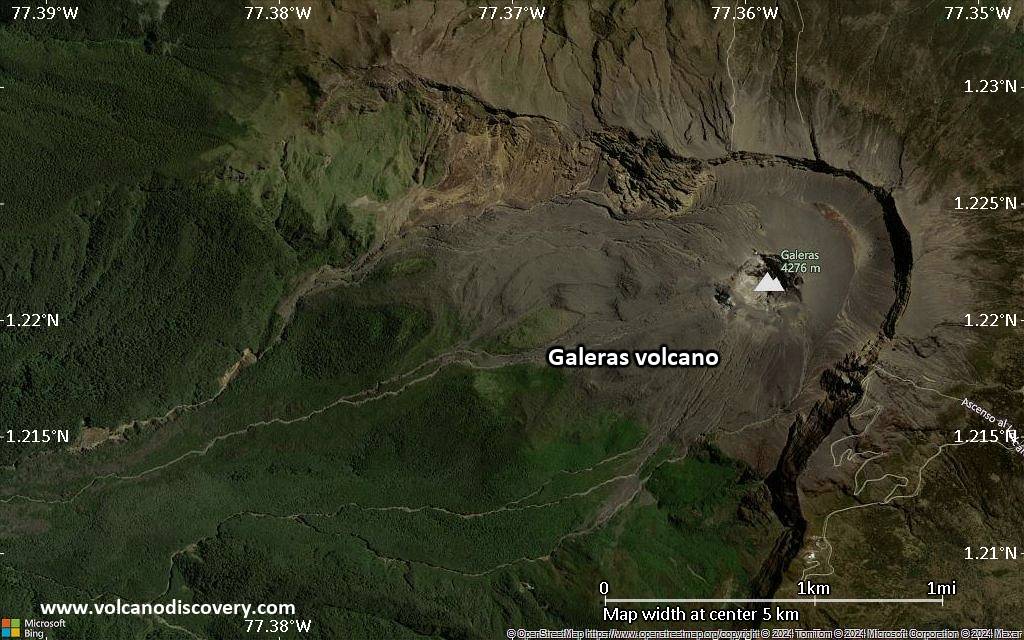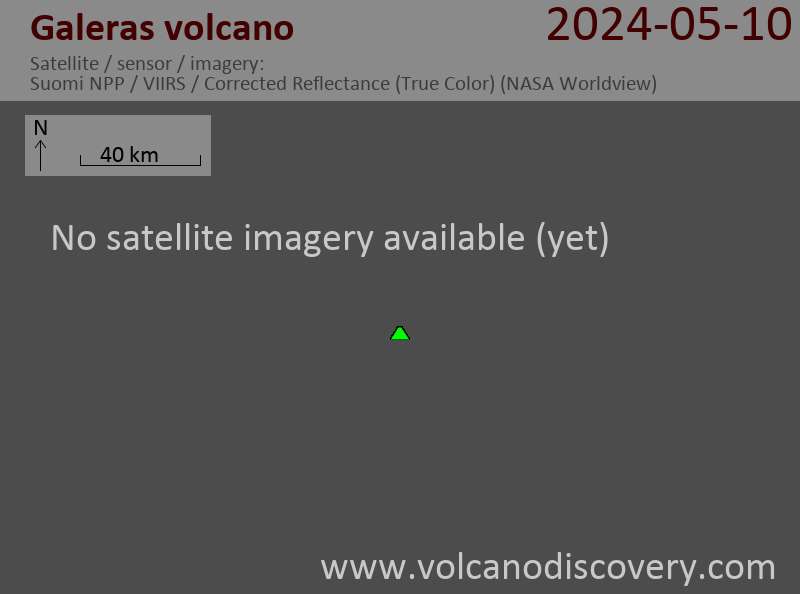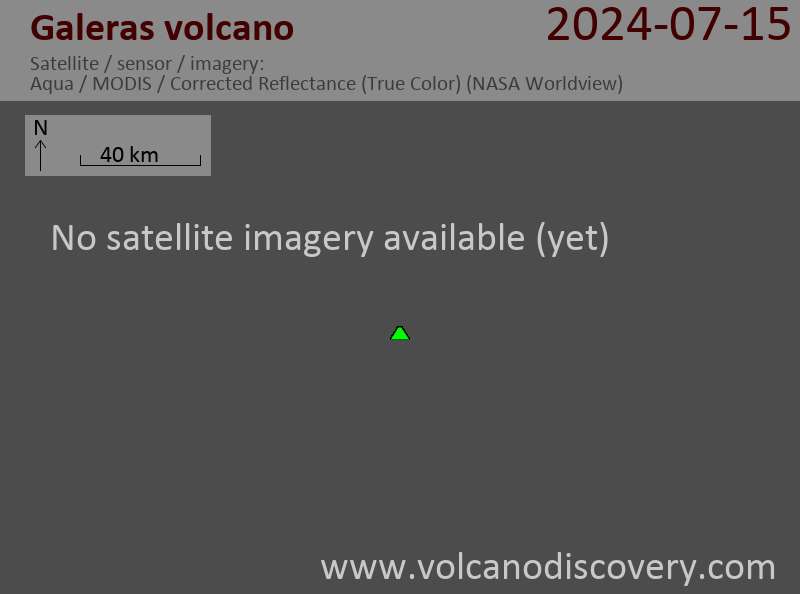Galeras Volcano
Galeras is one of Colombia's most active volcanoes. In an eruption in 1993, it killed a group of scientists and tourists who had been inside its crater when it erupted.
Galeras volcano eruptions: 1535, 1580, 1616, 1641-43, 1670-1736, 1754-56, 1796-1801, 1823, 1828-34, 1834, 1836(?), 1865-70, 1889, 1891, 1923, 1924-27, 1930, 1932, 1933(?), 1936, 1947, 1950, 1973(?), 1974-83, Feb-May 1989, Jan 1990 - July 1992, Jan-June 1993, Mar-May 2000, June 2002, July 2004 - Feb 2005, Nov 2005 - July2006, Oct 2007 - Jan 2008, Oct 2008 - 2010
Latest nearby earthquakes
Background
Galeras is one of Colombia's most frequently active volcanoes. The dominantly andesitic volcano has been active for more than 1 million years, and two major caldera collapse eruptions took place during the past 100,000 years. Several collapse events have produced debris avalanches that swept to the west and left a large horseshoe-shaped caldera inside which the modern cone has been constructed.Major explosive eruptions in the past thousands of years have produced widespread tephra deposits and pyroclastic flows that swept all but the southern flanks. A central cone slightly lower than the caldera rim has been the site of numerous small-to-moderate historical eruptions since the time of the Spanish conquistadors.
The fatal eruption in 1993
Galeras became active again in 1988 after 10 years of dormancy. It became infamous when it erupted on 14 January 1993, killing six volcanologists and three tourists who were inside the crater when it exploded. The group was part of an scientific conference excursion and their final decision to enter the crater, pushed forth by team leader Stanley Williams (who miracoulously survived), was and still is highly debated: the fatal decision was made despite the observation of a significantly increased number of particular earthquakes (tornillos), which had preceded previous eruptions and also started to occur in the days before the eruption.
Significant volcanic eruptions: Galeras volcano
Additionally, there are 6 uncertain or discredited eruptions from Galeras volcano.
| Date | Note | VEI | Deaths | Damage | |
|---|---|---|---|---|---|
| Summit crater Historical obs./docs. | 2 | ||||
?? | Uncertain Eruption Historical obs./docs. | ? | |||
| Central cone Historical obs./docs. | 1 | ||||
Historical obs./docs. | 3 | ||||
Historical obs./docs. | 3? | ||||
Historical obs./docs. | 2 | ||||
| El Pinta vent Historical obs./docs. | 3 | ||||
| El Pinta vent Historical obs./docs. | 1? | ||||
Historical obs./docs. | 1 | ||||
| Summit crater, west, SW, & south rims Historical obs./docs. | 2 | ||||
| 1993 Jan 14 (eruption | Historical obs./docs. | 2 | 9 | Info | |
Historical obs./docs. | 2 | ||||
| El Pinta vent Historical obs./docs. | 2 | ||||
Historical obs./docs. | 1? | ||||
?? | Uncertain Eruption | 2 | |||
Historical obs./docs. | 2 | ||||
?? | Uncertain Eruption | 2? | |||
Historical obs./docs. | 2 | ||||
?? | Uncertain Eruption | ? | |||
Historical obs./docs. | 2 | ||||
?? | Uncertain Eruption | ? | |||
Historical obs./docs. | 3 | ||||
Historical obs./docs. | 2 | ||||
Galeras Volcano FAQ
+When was the last eruption of Galeras volcano?
The last confirmed eruption of Galeras occurred during 2012 - 2014.
+How often does Galeras volcano erupt?
Since 1535 AD, Galeras volcano has had at least 30 historically documented eruptions. This means that it erupts on average every 16.3 years.
Many eruptions of Galeras have lasted more than one year. In total, the volcano has been in eruption during 133 out of 490 years until now. In other words, Galeras has been active at least one in 3.7 years on average. Note that this value is likely an underestimate, because the known history of eruptions from Galeras is likely incomplete, especially further back in time.
+How active is Galeras volcano at present?
Galeras volcano is very active: Since 1900, it has had 35 eruptions, and been active during 35 years out of 126 as of now. This means, Galeras has been in eruption one in 3.6 years on average. The last eruption was from 2012 until 2014 and ended 12 years ago.
+When was the largest eruption of Galeras volcano?
The largest eruption of Galeras volcano in historic times occurred during 2008 - 2010. It ranks as a "vulcanian" eruption with a magnitude 3 on the VEI (Volcanic Explosivity Index) scale.
Latest satellite images
Galeras Volcano Maps
